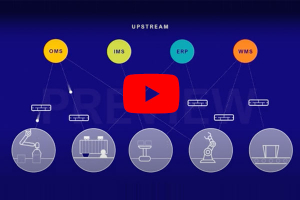Five Priorities for Omnichannel Retail Supply Chains
This white paper identifies five key elements that all retailers should be incorporating into their demand-driven omnichannel supply chain strategies.
Using Technology to Manage Expectations in an Omnichannel World
As the retail industry continues to evolve and face new challenges, there are five essential components that must be embedded in all omnichannel retail supply chains to be successful.
The retail supply chain has experienced some dramatic evolutions over the last 10 to 15 years.
What started out as a straightforward process for getting goods from a warehouse or a distribution center (DC) and out onto the retail floor has become a central focus for companies managing a complex supply chain including e-commerce, omnichannel, and brick-and-mortar.
No longer focused solely on storing and shipping pallets of goods, the true omnichannel warehouse must have the capability to intelligently optimize fulfillment and increase store efficiency by packing replenishment orders according to individual store layouts and preferences as well as orchestrating the fulfillment and delivery of single orders to individual customers’ doorsteps.
Covering this spread and keeping these order promises can be difficult and presents high hurdles for retailers that rely on a hodgepodge of manual systems, spreadsheets, and older technology solutions to run their supply chains.
Concurrently, the lines between offline and online retail sales continue to blur, with offline players improving their online presence (e.g., Walmart’s acquisition of Jet.com) and vice-versa (Amazon’s purchase of Whole Foods).
This, coupled with the sheer uncertainty over what channel a customer will eventually adopt, stokes the need for a more modern fulfillment operating system.
The opportunity is impossible to ignore. E-commerce sales worldwide are expected to grow from $2.9 trillion in 2018 to $6.5 trillion by 2023, according to Statista.
Download this white paper that identifies five key elements that all retailers should be incorporating into their demand-driven omnichannel supply chain strategies.
What’s Related




Favorites





